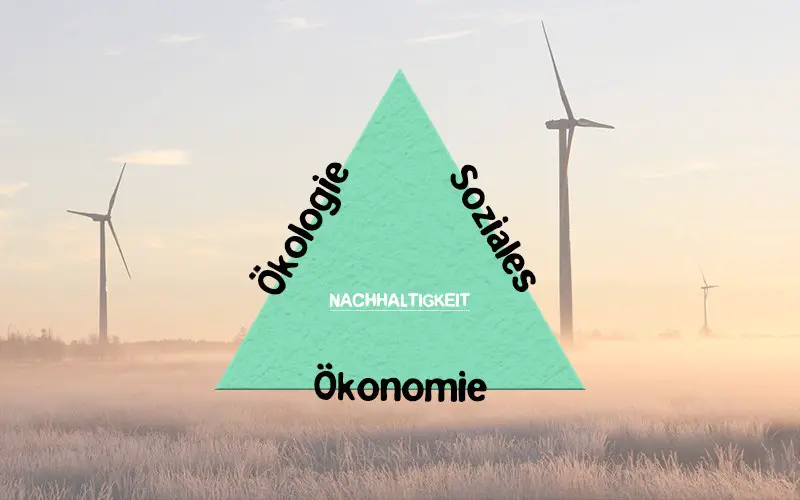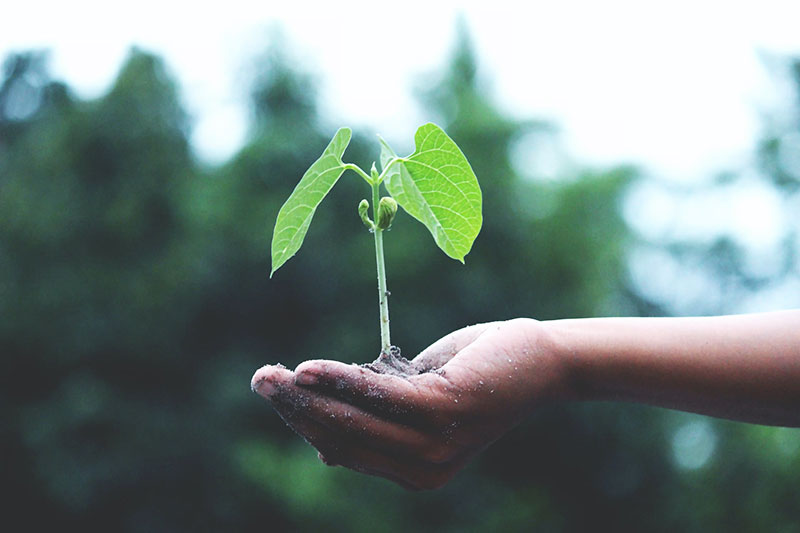What is the triangle of sustainability? Whether climate change or World hunger - we humans have maneuvered ourselves through our behavior on this planet, in an unpleasant situation and must nowadays more than ever with the greatest environmental and social problems of our time struggle with. And all because we have not been responsible with the resources of our planet. Instead, we have lived irresponsibly - irresponsibly towards future generations that will inhabit this planet.
The sustainability triangle is a concept that can help to optimize our behavior in every respect. In this article I would like to introduce it to you.
What is the triangle of sustainability?
The triangle of sustainability (also called the three-pillar model) is a model for the further development of a sustainable society based on the fact that both ecological and economic, as well as social goals implemented simultaneously be. All three pillars of the sustainability triangle are of equal importance, depend on each other and must therefore be evaluated as a whole. For example, soil contaminated with pollutants reduces crop yields from arable land, which in turn causes financial hardship for the farmer.
The model fundamentally aims to meet the needs of currently living people and all future generations.
The three pillars of the sustainability triangle

All three pillars have their role and should work together to ensure that all life on earth is fair, worth living and viable.
- Ecology + social = worth living
- Economy + ecology = viable
- Social + economic = fair
Here I would like to show you the pillars of the sustainability triangle once again in detail and using the example of dam construction in China explain.
Ecology
This pillar relates above all to the protection of our environment. A goal that is achieved through ecological action and the careful use of natural resources must be achieved. Each person leaves behind his own ecological footprint through driving, regular air travel on vacation or our own diet. The "Ecology" pillar is based on the fundamental idea that we humans should not consume more resources than can be generated in the same period of time.
Example dam construction: Many animal and plant species lose their habitat, which has to give way for the huge dam.
Tip: If you could use some more inspiration for your personal eco-friendly daily life, check out the post now Environmental protection tips for everyday life.
Economics
The economic pillar of the triangle, of course, refers to businesses. The focus of a sustainably operating company should not be on maximum profit, but on long-term existence. The latter is only given if the company does not act at the expense of the people in the region and not at the expense of the environment. Every single person - but also every single company - should not consume more resources in the sense of the sustainability triangle than nature can generate in the same period of time.
Example dam constructionThe construction industry gets new orders and regional companies get cheaper electricity.
Social
The pillar of "social" refers to the responsibility of our own actions towards other people. The basic aspects of sustainable action in this respect are above all justice, equal opportunities and solidarity. The main focus is on the right to education, job creation, fair pay and meaningful provision for those who have already left working life. The goal of the "social" must be that all people currently living on earth can enjoy the same opportunities in life or the same quality of life.
Example dam constructionResidents have to relocate and give up their livelihood, while other people are happy about lower electricity prices.
Conclusion: Now the sustainability of the dam project can be weighed using the sustainability triangle. Since there are both negative and positive impacts, a compromise must be found in this case.
Another example of application
The triangle of sustainability can therefore be used very well to critically question a specific project with regard to the three pillars mentioned. The size of the project does not matter - it can serve, for example, the construction of a swimming pool in your own backyard - or, as marked in green, the construction of a dam on the Yangtze River in China. Here I would now like to give you another very positive application example:
- A kindergarten with an energy-efficient building made of environmentally friendly construction material is to be built and opened. (Environment)
- The cost compared to the construction of an ordinary kindergarten building identical. (Economics)
- Up to 80 children can learn, play and do handicrafts in this kindergarten - it also creates 25 jobs for educators. (Social)
Tip: You can also use the basic ideas of the sustainability triangle to improve your Making everyday life more sustainable. In the linked post, you'll learn how to get started easily.
The sustainability triangle for more environmentally and socially responsible action

Even if political factors and the relationships between the three classes are only taken into account to a limited extent, the model of the sustainability triangle provides useful assistance in evaluating projects in terms of their sustainability. We should take it to heart so that sustainable coexistence is possible in our society.
What do you think about the sustainability triangle? And when have you used it so far? I look forward to your comment.
Stay sustainable,

PS.: In the Knowledge blog I have prepared many more sustainability topics for you. For example, take a look directly at the problems with the Mass tourism.





